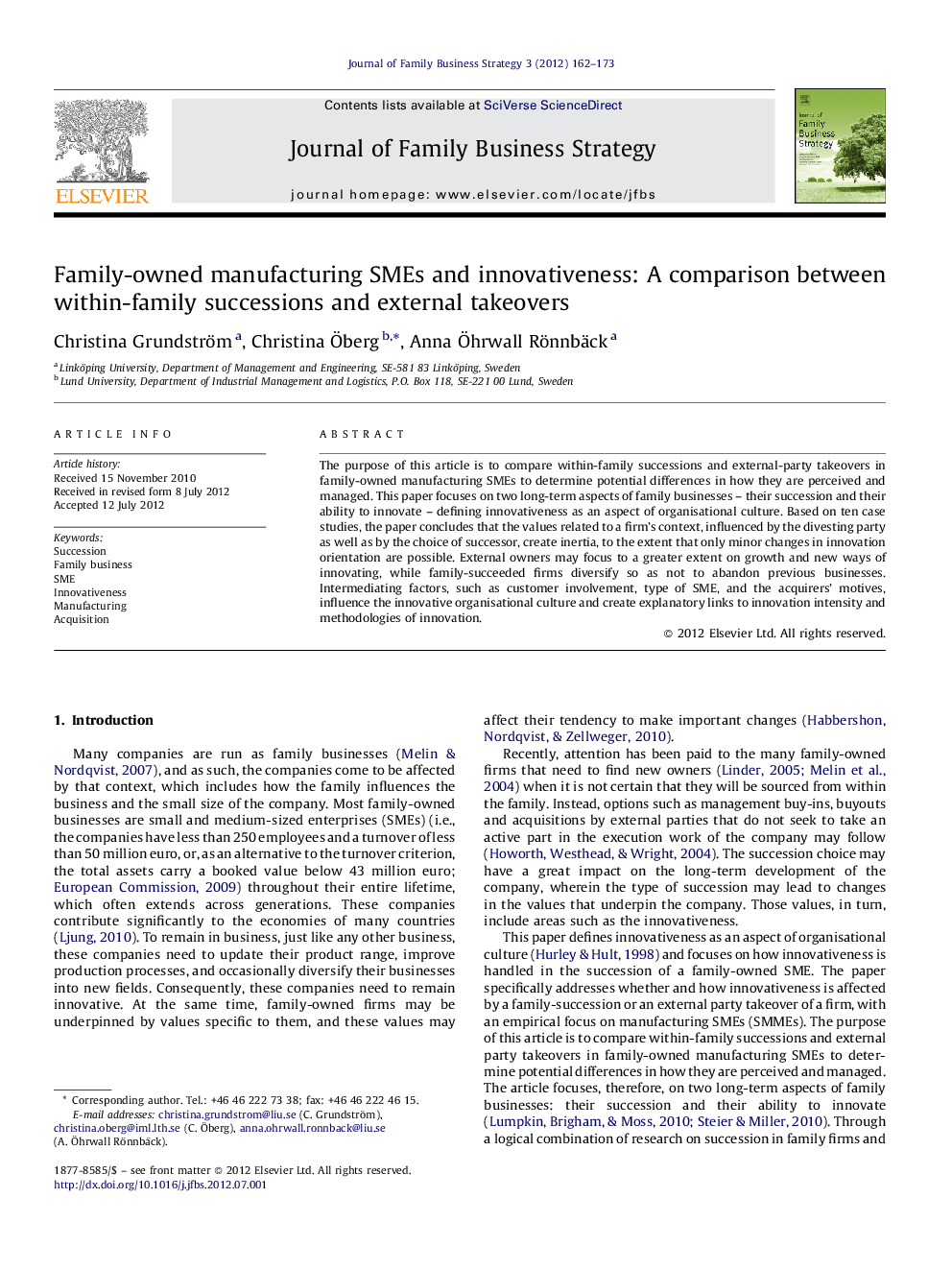| Article ID | Journal | Published Year | Pages | File Type |
|---|---|---|---|---|
| 1020128 | Journal of Family Business Strategy | 2012 | 12 Pages |
The purpose of this article is to compare within-family successions and external-party takeovers in family-owned manufacturing SMEs to determine potential differences in how they are perceived and managed. This paper focuses on two long-term aspects of family businesses – their succession and their ability to innovate – defining innovativeness as an aspect of organisational culture. Based on ten case studies, the paper concludes that the values related to a firm's context, influenced by the divesting party as well as by the choice of successor, create inertia, to the extent that only minor changes in innovation orientation are possible. External owners may focus to a greater extent on growth and new ways of innovating, while family-succeeded firms diversify so as not to abandon previous businesses. Intermediating factors, such as customer involvement, type of SME, and the acquirers’ motives, influence the innovative organisational culture and create explanatory links to innovation intensity and methodologies of innovation.
► The study indicates how family-SMEs maintain previous views on innovation following a succession. ► The difference between within-family succession and external takeovers is limited. ► Customer involvement, type of SME, and motives explain levels of innovativeness. ► Previous owners constrain future innovation through their choice of successors. ► The study highlights context as an important variable to determine the perpetuation of company values.
